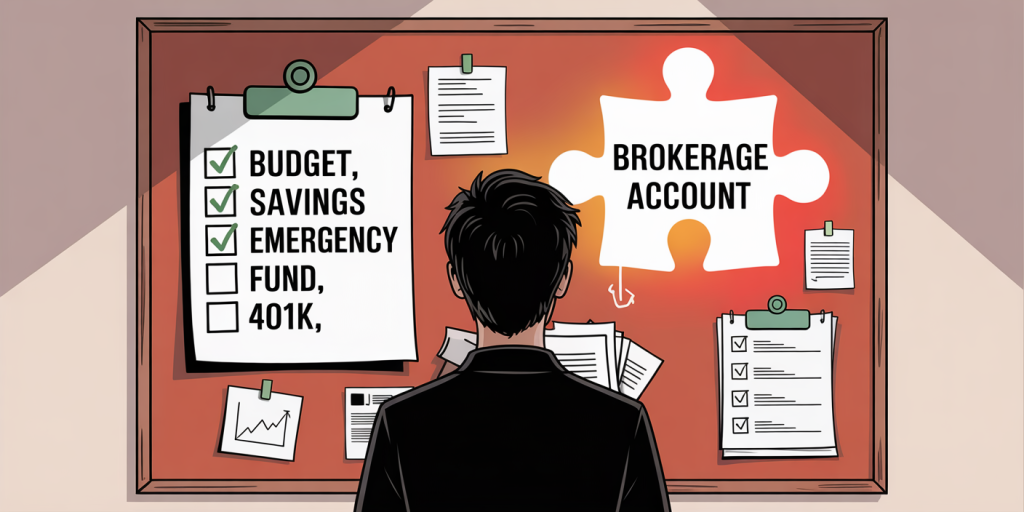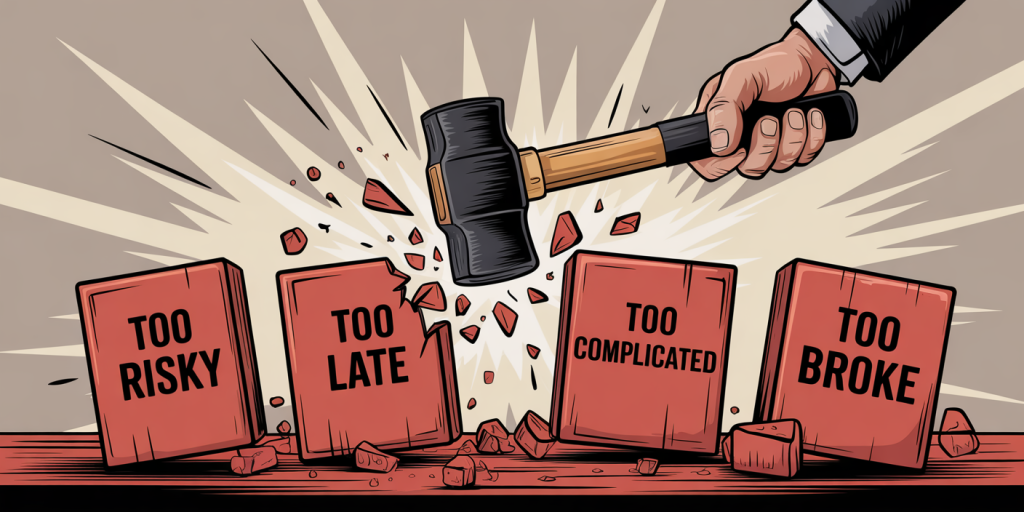The One Financial Move You’re Not Making (But Should Be)
Anúncios
Introduction: The Most Overlooked Wealth Strategy
In today’s world of personal finance, it’s easy to think you’re on the right path. You’ve opened a retirement account, you follow a budget (most of the time), you avoid credit card debt, and you’re slowly building up an emergency fund. On paper, that all looks great—and it is.

But there’s still a major financial move that most people don’t make until it’s far too late. A move that doesn’t require a six-figure income or Wall Street-level knowledge. A move that could transform your financial future.
Anúncios
That move is opening and consistently contributing to a taxable brokerage account.
This is not a trending crypto coin, a get-rich-quick scheme, or some advanced tax loophole. It’s a straightforward, flexible, and powerful wealth-building strategy that millions of people delay—sometimes for decades—because they don’t fully understand it.
Anúncios
In this article, we’ll break down what a taxable brokerage account is, why it matters so much, how it compares to retirement accounts, and how to start using it right now—even if you think you’re not ready.
Why Most People Don’t Invest Outside of Retirement
Despite how accessible investing has become, most people still don’t use taxable accounts. Here’s why:
1. Lack of Awareness
For many, the only investing they’re familiar with is inside a retirement plan like a 401(k) or IRA. These accounts are essential, but they’re also limited. Contribution limits, early withdrawal penalties, and employer constraints make them less flexible.
2. Fear and Intimidation
Words like “capital gains,” “dividends,” and “asset allocation” can sound intimidating. Many assume you need to be an expert—or wealthy—to open a brokerage account. This simply isn’t true anymore.
3. Prioritizing Cash Over Growth
Keeping savings in cash feels safe. But in reality, inflation slowly erodes the value of that money. A brokerage account allows your dollars to grow, not just sit still.
4. Short-Term Thinking
People often prioritize short-term spending—vacations, gadgets, even just “having cash on hand”—instead of long-term investing. Without a long-term plan, wealth growth remains stagnant.
What Is a Taxable Brokerage Account? (And Why It’s a Game-Changer)
A taxable brokerage account is an investment account that lets you buy and sell assets like stocks, bonds, ETFs, mutual funds, and more—with no contribution limits and no early withdrawal penalties.
Unlike retirement-specific accounts, a taxable account gives you freedom:
-
No income limits
-
No age restrictions
-
Withdraw whenever you want
-
Invest in anything the brokerage offers
Why It Matters
Because of this flexibility, you can:
-
Save for mid-term goals like buying a home or launching a business
-
Supplement your retirement savings
-
Take advantage of long-term capital gains tax rates
-
Grow wealth even if you’ve maxed out retirement contributions
Example:
If you invest $400/month in a diversified index fund for 20 years at an average 7% annual return, you’d end up with over $200,000—and more than half of that would be growth.
That’s not lottery money. That’s real, consistent wealth-building.
How to Get Started (Step-by-Step)
Here’s the good news: starting a brokerage account today is easier than ever. It doesn’t require a financial advisor or big capital. You can do it from your phone, in under 15 minutes.
Step 1: Pick a Reputable Brokerage
Some of the best beginner-friendly and low-fee platforms include:
-
Fidelity
-
Charles Schwab
-
Vanguard
-
M1 Finance
-
Robinhood
-
SoFi
-
Public
-
Betterment (for automated portfolios)
Choose based on your preference for automation, available research tools, or mobile features.
Step 2: Fund the Account
Link your bank account and start with as little as $25. Some brokers allow fractional shares, meaning you can invest in Apple or Tesla even if you don’t have hundreds of dollars.
Set up monthly auto-deposits to build consistency.
Step 3: Choose Your Investments
You don’t need to be a stock picker. In fact, most pros recommend sticking to low-cost index ETFs. Popular examples:
-
VTI – Total US stock market
-
VOO – S&P 500 index
-
VXUS – International stocks
-
BND – Bonds
These offer diversification and track the broader market, which has historically averaged 7–10% returns annually over time.
Step 4: Let It Grow
Resist the urge to check your portfolio daily. Markets go up and down. Your focus should be long-term growth, not short-term noise. Quarterly check-ins are plenty for most people.
Busting the Myths That Keep People From Starting

Let’s take a look at the most common reasons people avoid investing outside of retirement—and why those reasons don’t hold up.
Myth 1: “I Don’t Have Enough Money”
You don’t need thousands of dollars. You can start with the cost of dinner out. What matters more than amount is consistency.
Myth 2: “It’s Too Risky”
Yes, markets fluctuate. But cash loses value over time too. If you’re investing for 5+ years, the risk of doing nothing is far greater than the risk of market volatility.
Myth 3: “I Need to Pay Off All Debt First”
Focus on high-interest debt (like credit cards) first. But if you have manageable student loans or a mortgage, you can still invest small amounts now while making payments. It’s not all-or-nothing.
Myth 4: “I’m Too Late to Start”
It’s never too late. Starting at 40, 50, even 60 still gives you years of potential growth. Plus, you’ll teach others (kids, siblings, friends) that action is always better than regret.
Real-Life Case Study: Michael’s Quiet Wealth Move
Michael is 31, earns $52,000/year, and doesn’t have access to a 401(k). He stumbled across a video about taxable brokerage accounts and decided to start small.
-
He opened an account on M1 Finance
-
Started with $100/month into VTI
-
Increased to $250/month over time
-
Now has $8,700 in his account after 3 years
That account is separate from his emergency fund and checking. It’s a “long-term wealth” bucket he doesn’t touch. He’s not a stock expert. He’s not rich. He’s just consistent—and now ahead of 90% of his peers.
That’s the power of a move most people never make.
Extra Benefits You Might Not Know About
Here are some lesser-known advantages of a taxable brokerage account:
1. Long-Term Capital Gains Tax Rates
Hold investments for over a year and you’ll likely pay lower tax rates when you sell—often 15% or even 0%, depending on income.
2. Dividend Income
Investments like SCHD or blue-chip stocks pay dividends—small cash payouts just for holding the stock. These can be reinvested or withdrawn as income.
3. Tax-Loss Harvesting
If you sell investments at a loss, you can use those losses to offset gains and even reduce your taxable income.
4. Goal Flexibility
Unlike retirement accounts, you can use this money whenever you want, without penalties—great for buying a home, funding a sabbatical, or launching a business.
Conclusion: Future You Will Thank You

This is the financial move most people aren’t making: using a taxable brokerage account to quietly build wealth beyond retirement.
It’s not flashy. It won’t go viral on TikTok. But it works—better than most of the noisy trends competing for your attention.
You don’t need to wait until your debts are gone or your income hits six figures. You don’t need to predict the market. You just need to start. The sooner, the better.
So open the account. Transfer what you can. Automate your contributions. Stay consistent. And in five, ten, or twenty years—you’ll look back and realize: this was the smartest money move you ever made.
Post Comment